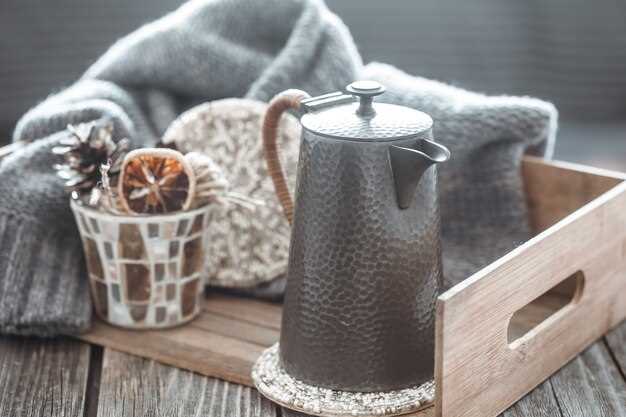
In the realm of aviation, the cabin interior serves as a hallmark of luxury and sophistication. The choice of materials is pivotal in creating an atmosphere that speaks to comfort, exclusivity, and high-end design. As private and business jet manufacturers evolve, they increasingly focus on integrating premium components that enhance both aesthetics and functionality. This article explores the essential materials that define luxurious cabin interiors, emphasizing their roles in elevating passenger experience.
Wood, leather, and metal are among the primary materials that contribute to the opulent feel of a cabin. Natural woods, such as mahogany and walnut, are often utilized for cabinetry and paneling, providing warmth and elegance to the space. Coupled with finely grained leathers, which are favored for seating and trim, these materials create a tactile richness that is both inviting and sophisticated. Meanwhile, the use of high-grade metals, such as polished aluminum or titanium, adds a modern touch, reflecting light and enhancing the overall design aesthetics.
Beyond the traditional choices, advancements in technology have led to the incorporation of innovative synthetic materials designed for performance and luxury. These materials not only offer durability but also allow for creative applications that can fit bespoke design needs. Additionally, eco-friendly options have gained traction, appealing to an environmentally conscious clientele who seeks both luxury and sustainability. As trends continue to shift, understanding the significance of these key materials will be essential for anyone aiming to create an extraordinary cabin interior.
Choosing the Right Wood Types for Elegance and Durability

When designing luxurious cabin interiors, selecting the appropriate wood types is crucial for achieving both aesthetic appeal and long-term durability. Various wood species offer unique characteristics that can enhance the overall atmosphere of a cabin while withstanding the rigors of use.
Walnut is renowned for its rich color variations and elegant grain patterns, making it a popular choice for high-end interiors. Its dark hues add sophistication, while its natural oil content contributes to its durability and resistance to moisture. This wood maintains its beauty over time, making it ideal for furniture and paneling.
Cherry wood is another favorite among interior designers. It possesses a warm, reddish tone that deepens with age, providing a timeless appeal. Cherry is also known for its excellent workability, allowing for intricate designs and detailed carvings. Its stability and resistance to warping make it suitable for various applications, from cabinetry to decorative elements.
Mahogany stands out for its luxurious finish and remarkable stability. This classic wood choice is often associated with opulence due to its rich color and fine grain. Mahogany is resistant to swelling and shrinking, ensuring that your cabin interior maintains its integrity despite fluctuating humidity levels. Its natural luster enhances the beauty of furniture, moldings, and flooring.
Oak, particularly white oak, is celebrated for its strength and durability. Its prominent grain and light colors create a rustic yet elegant atmosphere. Oak’s natural resistance to wear and tear makes it an excellent choice for flooring and heavy-use surfaces. Additionally, it can be stained in various shades, allowing for versatility in design.
Lastly, Maple is favored for its clean and modern appearance. The light color and fine grain pattern make it suitable for contemporary cabin interiors. Maple is exceptionally strong and resistant to shock, making it an ideal choice for furnishings that endure heavy use. Its ability to take stains well further enhances its appeal.
In conclusion, the selection of wood types for luxurious cabin interiors should prioritize both elegance and durability. By considering the unique properties of walnut, cherry, mahogany, oak, and maple, designers can craft interiors that not only attractively showcase natural beauty but also stand the test of time.
Innovative Fabrics That Enhance Comfort and Aesthetics

In the realm of luxurious cabin interiors, the selection of fabrics plays a pivotal role in defining both comfort and visual appeal. Innovative materials have revolutionized the way designers approach these aspects, combining cutting-edge technology with unparalleled style.
One notable advancement is the use of advanced microfibers. These materials are not only incredibly soft to the touch but also boast superior durability and stain resistance. Their lightweight nature allows for easy maintenance while maintaining a high-end look, making them ideal for cabin environments where elegance and practicality must coexist.
Another significant innovation is the incorporation of smart textiles. These fabrics can adapt to environmental changes, offering temperature regulation and moisture-wicking properties. Such functionality enhances passenger comfort, ensuring a pleasant experience regardless of external conditions. For instance, phase-change materials can absorb excess heat and release it when the surrounding temperature drops, providing a dynamic comfort level throughout the journey.
Moreover, recycled fabrics are gaining traction in luxury cabin interiors. These eco-friendly materials not only reduce the carbon footprint but also add a unique aesthetic character. Textiles made from recycled plastics or organic fibers can deliver luxury without compromising on sustainability, appealing to environmentally conscious consumers.
Natural fibers like bamboo and ethically sourced wool are also making a comeback. Bamboo fabrics are praised for their breathability and natural antibacterial properties, making them ideal for maintaining hygiene in confined spaces. Meanwhile, wool offers superior insulation and a timeless appearance, adding warmth and elegance to cabin interiors.
The integration of leather alternatives, such as synthetic leather made from bio-based materials, has also become an attractive option. These alternatives provide the same luxurious aesthetic of traditional leather but with improved sustainability and animal-friendly benefits. They possess excellent durability and can be crafted in a variety of textures and colors, allowing for versatile design choices.
Finally, the use of innovative textures and patterns can drastically enhance the visual interest of cabin interiors. Fabrics featuring 3D weaves or embossed finishes can add depth and sophistication, transforming the overall ambience into one of opulence and style.
In conclusion, the evolution of fabrics in luxury cabin interiors is marked by a harmonious blend of comfort, aesthetics, and sustainability. These innovative materials not only elevate the visual appeal but also enhance the overall passenger experience, making each journey a delight.
Exploring High-Quality Leather Options: Types and Treatments
When it comes to luxurious cabin interiors, high-quality leather is a preferred material due to its durability, aesthetic appeal, and timeless character. Various types of leather are available, each offering distinct qualities and benefits. Understanding these options is essential for selecting the right leather for cabin interiors.
One of the most prestigious types is full-grain leather, which is made from the top layer of the hide. It retains the natural grain patterns, making each piece unique. This leather is highly durable and develops a rich patina over time, enhancing its visual appeal. It is ideal for high-traffic areas within cabin interiors due to its longevity.
Top-grain leather is another popular choice, crafted from the second layer of hide. Although it is sanded to remove imperfections, it remains more breathable than lower-quality leathers. Top-grain leather is often finished with pigments or dyes to achieve a consistent appearance, making it a versatile option for modern designs.
For a more economical option, split leather, created from the lower layers of the hide, offers a softer feel but is generally less durable. Suede and nubuck are types of split leather, presenting a soft, textured finish that can add richness to cabin interiors. However, these materials are more susceptible to staining and require careful treatment and maintenance.
In terms of treatments, leather can undergo various processes to enhance its functionality and aesthetic qualities. Aniline leather is dyed with soluble dyes and retains the natural look of the hide. This type is known for its luxurious feel and color depth, but it is less resistant to stains and requires regular conditioning to maintain its suppleness.
For increased durability, protected or semi-aniline leather is treated with a surface coating, providing resistance to scratches and spills. This type retains some natural grain characteristics while offering easier maintenance, making it suitable for families or high-use environments.
Choosing the right type of leather and the appropriate treatment is crucial for achieving the desired balance between luxury, functionality, and durability in cabin interiors. Quality leather not only enhances the aesthetic value but also ensures longevity, making it a worthy investment for any luxurious setting.

